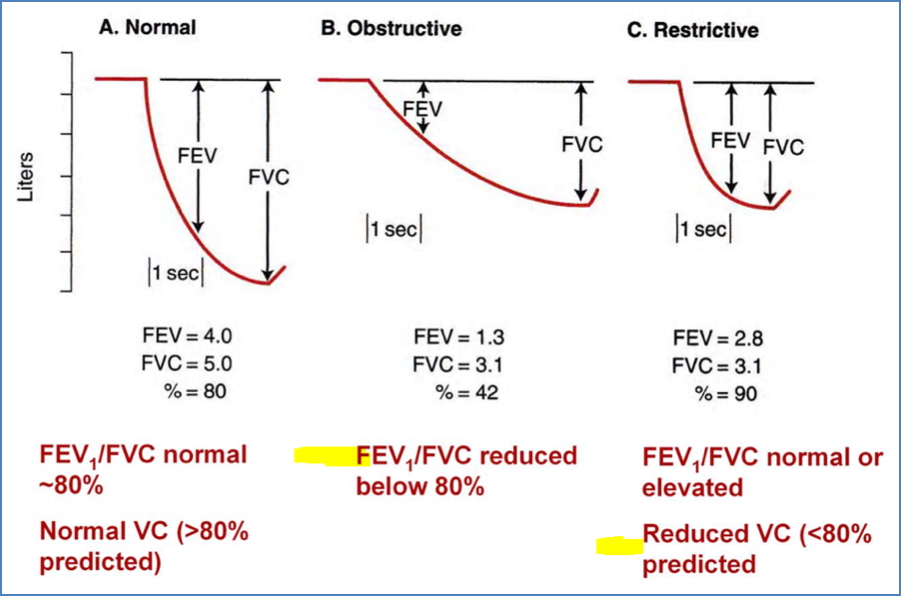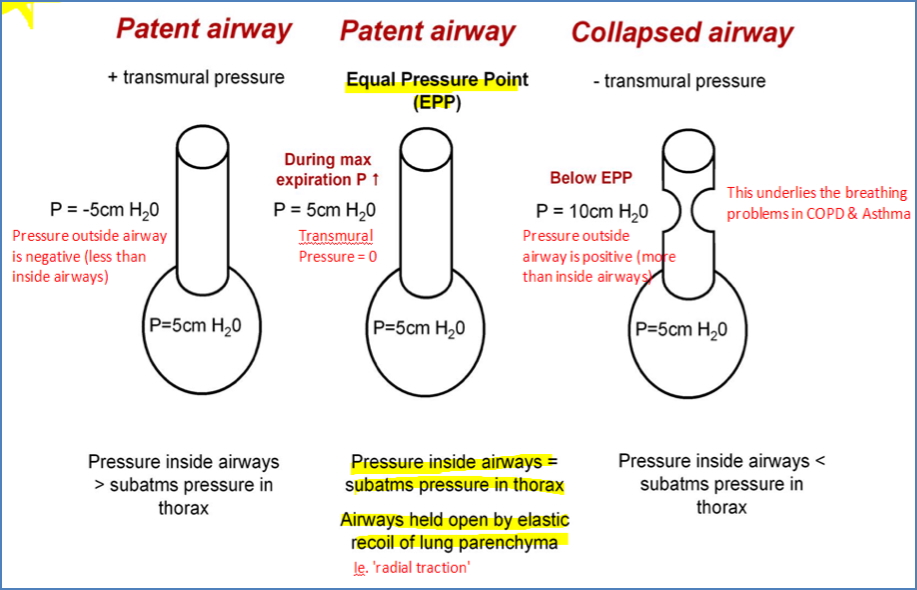Table of Contents
Overview – Obstructive vs Restrictive Lungs
Understanding the distinction between obstructive vs restrictive lungs is fundamental to interpreting respiratory pathology, spirometry, and clinical signs. Obstructive conditions impair airflow due to increased airway resistance, while restrictive conditions limit lung expansion. These categories influence lung volumes and capacities in distinct ways and help guide both diagnosis and treatment planning.
Obstructive Lung Disease
Definition
Obstructive lung diseases are characterized by increased airway resistance, typically due to partial or complete airway obstruction during exhalation.
Pathophysiology
- Airway narrowing or collapse leads to:
- Increased resistance to airflow
- Air trapping and lung hyperinflation
- Impaired gas exchange and expiratory airflow limitation
Changes in Lung Volumes and Capacities
- ↑ TLC (Total Lung Capacity)
- ↑ RV (Residual Volume)
- ↑ FRC (Functional Residual Capacity)
- ↓ VC (Vital Capacity)
- ↓ FEV₁ (Forced Expiratory Volume in 1 second)
Key Diagnostic Spirometric Finding
- FEV₁ < 80% of FVC
- FEV₁ = Volume exhaled in the first second of forced expiration
- FVC = Total volume forcibly exhaled after full inspiration
Restrictive Lung Disease
Definition
Restrictive lung diseases involve limited lung expansion due to increased resistance to chest wall or lung compliance, but with normal airway resistance.
Pathophysiology
- Causes include:
- Chest wall abnormalities (e.g., obesity, scoliosis)
- Lung stiffness (e.g., pulmonary fibrosis)
- Increased intra-abdominal pressure (e.g., pregnancy)
Changes in Lung Volumes and Capacities
- ↓ TLC (Total Lung Capacity)
- ↓ VC (Vital Capacity)
- ↓ IC (Inspiratory Capacity)
Key Diagnostic Spirometric Finding
- Measured VC < 80% of predicted VC
- Measured VC = Patient’s actual vital capacity on spirometry
- Predicted VC = Based on age, sex, height, and population norms

Dynamic Airway Compression
Concept
Dynamic airway compression occurs when expiratory pressures collapse unsupported airways, impairing airflow—particularly in obstructive diseases.
Equal Pressure Point (EPP)
- EPP = Point along the airway where intrapleural pressure equals intra-airway pressure
- If this occurs in:
- Large airways → They remain open (cartilage support)
- Small airways → They collapse (no structural support)

During Passive Expiration
- Alveolar pressure mainly due to lung elastic recoil
- Thoracic (intrapleural) pressure is relatively low
- EPP occurs in larger, supported airways
- → Airways remain patent
During Forced Expiration (e.g. in Obstructive Disease)
- Alveolar pressure now due to muscular effort
- Thoracic pressure is much higher than recoil
- EPP shifts distally to smaller, unsupported airways
- → Airway collapse occurs (Dynamic Compression)

Summary – Obstructive vs Restrictive Lungs
Obstructive and restrictive lung disorders differ in their pathophysiology, spirometry profiles, and underlying mechanics. Obstructive diseases reduce expiratory flow through dynamic airway compression and air trapping, while restrictive diseases limit lung expansion due to decreased compliance. Understanding the distinction supports accurate diagnosis, appropriate interpretation of pulmonary function tests, and effective management. For related conditions, see our Respiratory Overview page.